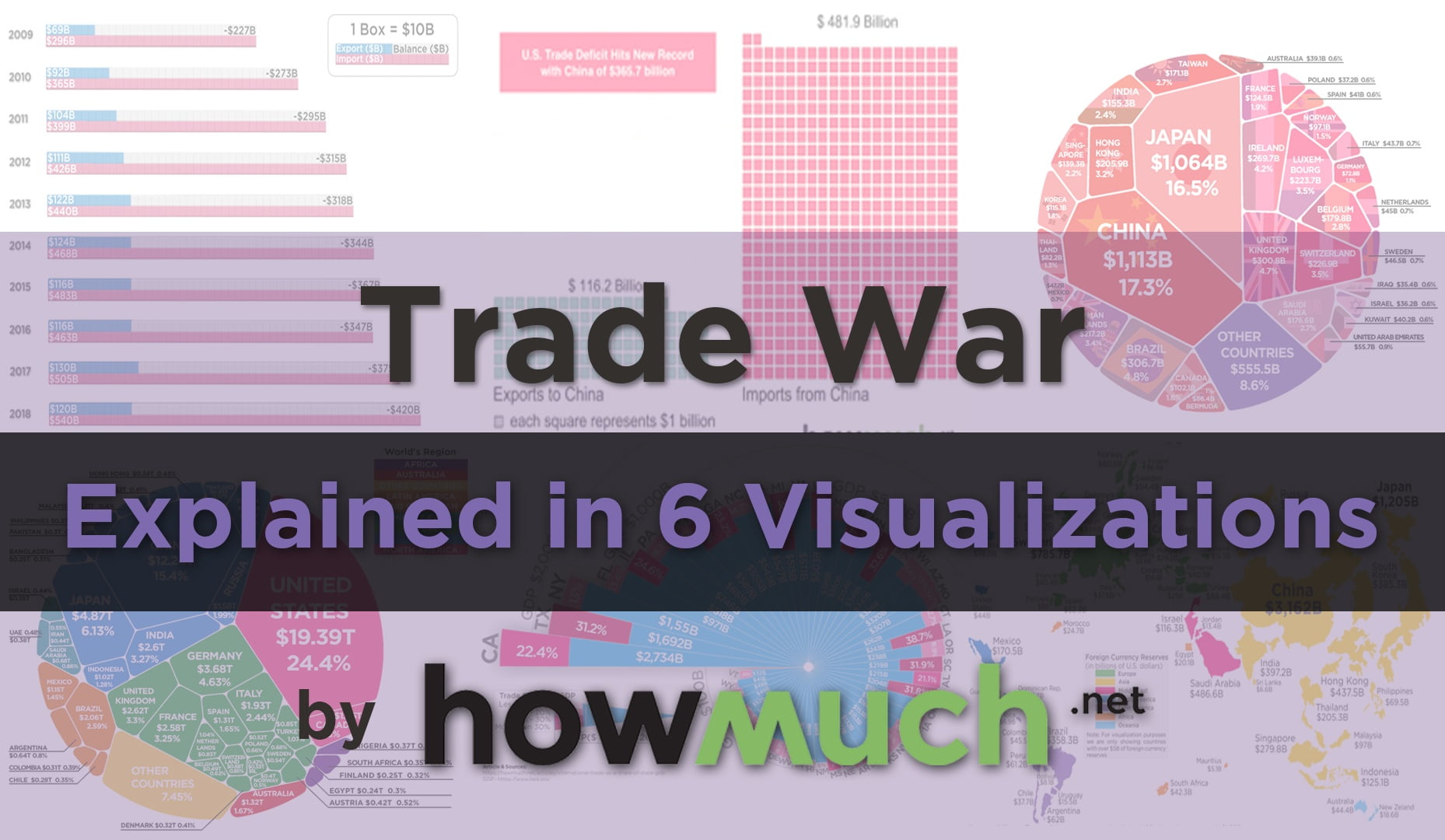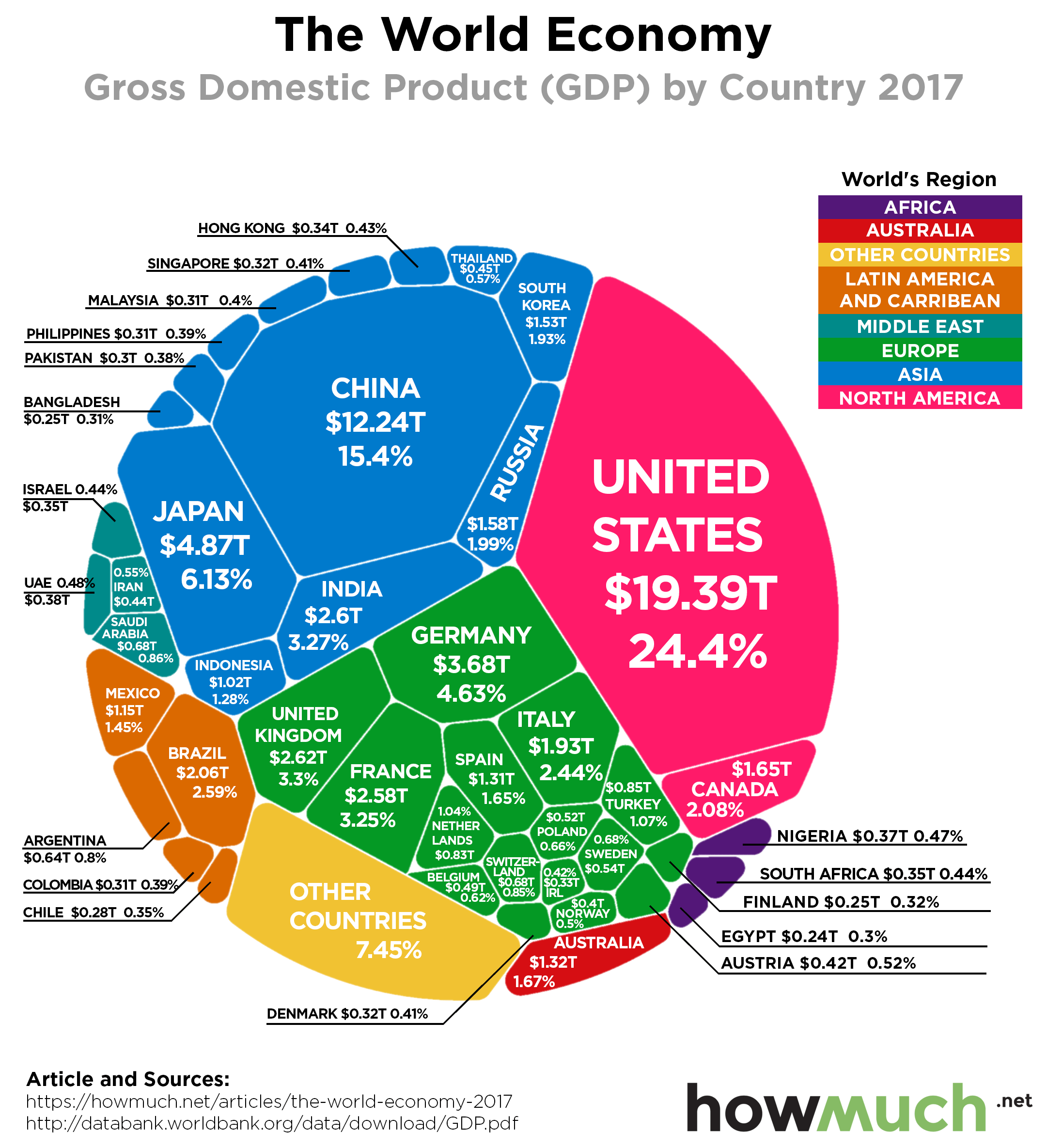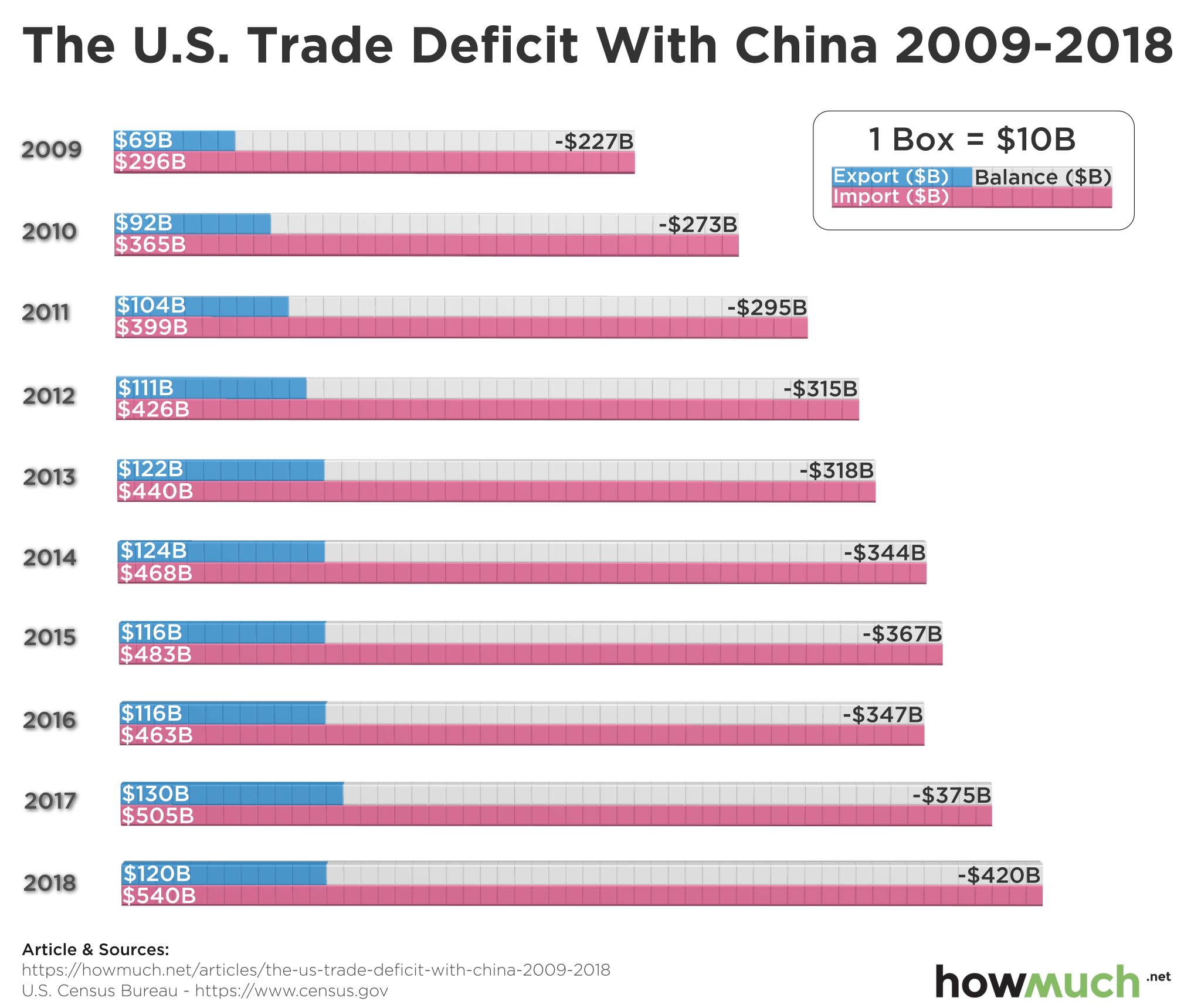
By howmuch,
Since World War II the United States sat atop the global throne of trade and industry. By every measure they dominated the world economy. China leveraged its massive population for economic growth. They’ve exploded onto the global stage as one of the largest economic powers.
For years the U.S. and China traded freely. Both economies grew in both size and influence. But, the trade war between the two nations brought fear to global markets. How much and where will the trade war impact?
- The U.S. and China make up almost 40% of the world’s Gross Domestic Product
- Exports from the U.S. to China grew from $3.9B in 1985 to $116.2B in 2015
- However, exports from China to the U.S. grew from $4.8B in 1985 to $481.9B in 2015
- The U.S. trade deficit sits at a whopping $420B
- Almost 40% of Michigan and Louisiana’s GDP relies on international trade
- China not only has the biggest forex reserves, they are the largest holder of U.S. debt
1. While the U.S. still reigns, China is becoming a dominant player

The U.S. and China currently dominate the world stage for economic power. They literally control almost half of the world’s GDP. While China focuses on transforming its economy from manufacturing to services and consumption, the U.S. derives most of its GDP from services. When you talk about a trade war between these countries, you’re talking about half the economic globe fighting!
2. The trade reliance built up over decades to become one of the largest economic relationships around the globe

This didn’t just happen overnight. Over 30 years China grew more and more to rely on the U.S. to buy their goods and grow their economy. While they initially started out closer, the U.S. quickly grew to import far more than China. However, the last decade has seen this begin to decrease some in percentage terms.
3. Nevertheless, the U.S. imports nearly 4.5x what it exports to China

China happens to be one of the largest consumers of soybeans the U.S. exports. In 2018 they take in over 35.6M tonnes of soybeans, over 8x the closest country. In 2019 they’ve exported 8.7M tonnes compared to 25M tonnes through August. While the trade war hurts China plenty, farmers take a massive hit in this war.
4. Not all states feel the impacts of changes in trade the same way

So it should come as no surprise that states like Illinois, who happen to be one of the top producers of soybeans, rely economically on China for trade. Trade hits each state differently. States like Texas rely extensively on trade (though mainly petroleum). But you don’t have to look far to find places in the U.S. hurt by the trade war.
5. China holds huge amounts of foreign currency because they rely so heavily on exports

For decades the U.S. Dollar has stood as the standard for doing trade. China’s recent growth required it to hold large amounts of foreign currencies to facilitate business. Conversely, most of the partners the U.S. trades with hold U.S. dollars.
6. China invests heavily in U.S. debt to keep high quality reserves

One of the biggest fears for U.S. economists in the trade war is the U.S. debt held by China. If China unloaded their debt holdings, it would primarily hurt China. Yet, it would eventually drive up U.S. interest rates over time. However, we’ve seen the start of currencies being used in the trade war. China has allowed its currency to weaken in an effort to make it’s outputs more competitively priced with market, and offset tariff costs.
As the trade war heats up, the final impact remains unknown. But do the graphics overstate or understate the possible impact?
Disclaimer: We at Prepare for Change (PFC) bring you information that is not offered by the mainstream news, and therefore may seem controversial. The opinions, views, statements, and/or information we present are not necessarily promoted, endorsed, espoused, or agreed to by Prepare for Change, its leadership Council, members, those who work with PFC, or those who read its content. However, they are hopefully provocative. Please use discernment! Use logical thinking, your own intuition and your own connection with Source, Spirit and Natural Laws to help you determine what is true and what is not. By sharing information and seeding dialogue, it is our goal to raise consciousness and awareness of higher truths to free us from enslavement of the matrix in this material realm.
 EN
EN FR
FR

























